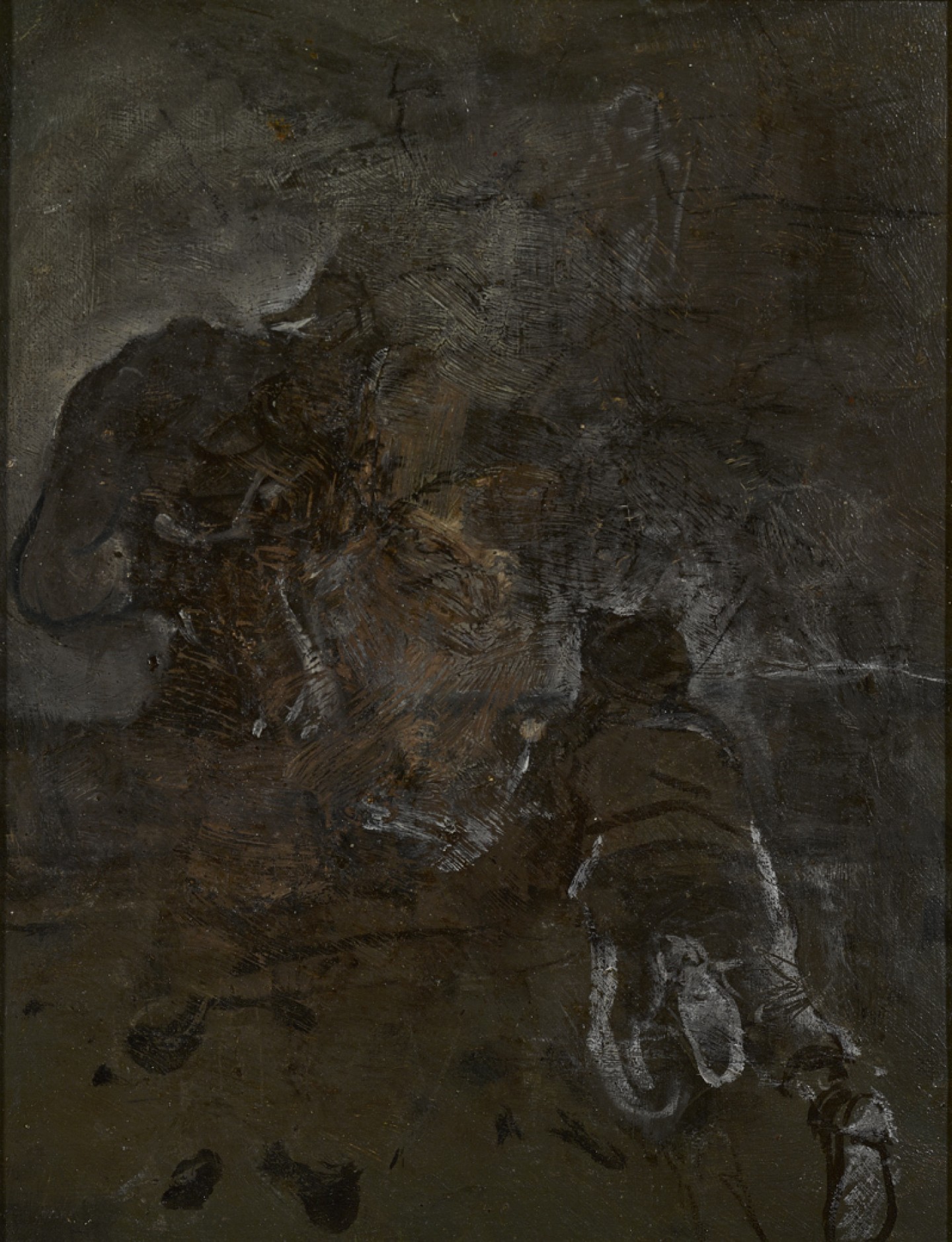DESCRIPTION
In the summer of 1879 Guthrie, Walton and Crawhall, three painters who were to become key members of the Glasgow School, painted at Rosneath on the Clyde coast; in 1881 at Brig o'Turk in the Trossachs, along with George Henry; in 1882 at Crowland, Lincolnshire; and in 1883 at Cocksburnpath, where they were joined by several of the other Glasgow School artists. It was in Crowland that Guthrie executed this painting and is thought to have begun one of his best-loved works, To Pastures New - The Goose Girl (Aberdeen Art Gallery).
Crowland is a picturesque village containing the ruins of a large medieval monastery, but the surrounding countryside is flat and relatively featureless. Perhaps that was the appeal, as the group were not distracted by the temptation to paint the countryside, but instead focused on discussing and developing their ideas and techniques and painting local farm labourers and the village streets. The Bridge, Crowland shows Guthrie's use of a square brush to give a firm and highly visible patchwork of brushstrokes, graduated in size to create perspective, as well as the introduction of a brighter palette. A handwritten note attached to the back of the painting by his friend James Hamilton Whitelaw states that the dog at the feet of the old man was painted by Joseph Crawhall.
DETAILS
ARTIST PROFILE
Sir James Guthrie, 1859-1930
Born in Greenock, the son of a minister of the Evangelical Union Church, Guthrie studied law at Glasgow University before turning to art in 1877. He was largely self-taught, although he received great encouragement from a number of Scottish painters based in London after he moved there in 1879, in particular John Pettie, who had dissuaded him from, visiting Paris before he settled in London. Although Guthrie had no direct contact with developments in France, in London he had many opportunities to see the work of Bastien-Lepage. Soon the influence of John Robertson Reid and George Clausen, themselves strongly influenced by the French artist, could be seen in Guthrie's painting.
Bastien-Lepage's influence on the works and the development of the Glasgow Boys cannot be overstated. He was the leading advocate of French tonal painting, his works seeming to present the viewer to a matter-of-fact and unsentimental vision of reality. He used a square brush to give a flat surface, adapting the patterns of his brushstrokes to the purposes of description. Guthrie was to adopt more vigorously than his contemporaries this technique of using a square brush and the putty-like textures, so favoured by Bastien-Lepage.
Later Guthrie turned to portrait painting with great success, becoming one of the most prominent Scottish portraitists as well as a leading artist in pastel, second only to Whistler.





